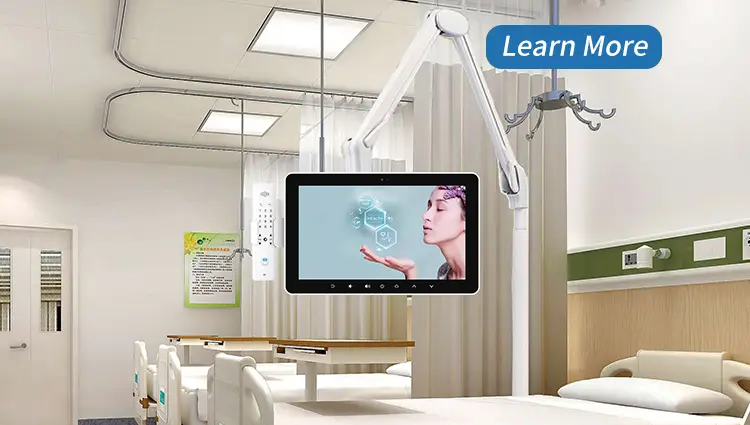Bedside entertainment terminals are revolutionizing the hospital experience, turning a typically stressful and isolating time into something more bearable—and even empowering—for patients. These all-in-one devices, installed right at the patient’s bedside, offer entertainment, education, communication tools, and more. But do they really improve patient satisfaction? The evidence says yes, and here’s how.
Reducing Stress and Boredom with Entertainment
Hospital stays can drag on, leaving patients staring at blank walls, feeling anxious and disconnected. Bedside entertainment terminals tackle this head-on by providing access to movies, TV shows, games, and the internet. This isn’t just a distraction—it’s a lifeline to normalcy. A 2023-2024 study found that hospitals using these terminals saw a 30% drop in patient anxiety complaints. Less stress translates directly to greater comfort, a key driver of satisfaction. In places like the U.S. and Europe, where hospital ratings hinge on patient feedback, this boost in mood can make a significant difference.
Empowering Patients Through Education
These terminals go beyond fun and games. They deliver educational content—think videos about treatment plans, health conditions, or recovery tips—right to the patient’s fingertips. When patients understand what’s happening with their care, they feel more in control and are more likely to follow medical advice. One hospital in New York reported a 93% increase in patient education via video after installing these systems, with satisfaction levels climbing steadily year after year. Engaged, informed patients are satisfied patients, and the data backs this up.
Enhancing Communication and Connection
Feeling cut off from loved ones or waiting endlessly for a nurse can sour any hospital stay. Bedside terminals fix this by enabling patients to message their care team or video call family directly. This cuts down on frustration and improves response times, while also reducing the need for constant staff check-ins. Nurses can focus on critical tasks instead of playing messenger, which streamlines care delivery. That same 2023-2024 study noted a 20% faster discharge process in hospitals with these systems—proof that better communication benefits everyone involved.
Personalizing the Experience
Patients can do more than watch TV with these terminals. They can order meals, adjust room lighting, or even fill out satisfaction surveys—all from their bed. This level of control makes the hospital feel less impersonal and more responsive to individual needs. It’s a small but powerful shift toward patient-centered care, and web sources consistently highlight it as a game-changer for satisfaction.
Boosting Care Efficiency
The benefits aren’t just for patients. By handling routine requests (like meal orders or basic questions), these terminals free up nurses to focus on clinical care rather than clerical tasks. Happier, less-stressed staff provide better care, and patients notice. It’s a virtuous cycle: improved workflow leads to better outcomes, which in turn lifts satisfaction scores.
The Proof in Action
The evidence isn’t hypothetical—it’s measurable. Beyond the 30% drop in anxiety and 20% faster discharges, hospitals report lower readmission rates and higher ratings tied to patient mood and engagement. These terminals aren’t just gadgets; they’re tools that address real pain points—boredom, confusion, isolation—and turn them into opportunities for connection and comfort.
In short, bedside entertainment terminals improve patient satisfaction by reducing stress, empowering patients with knowledge, enhancing communication, personalizing care, and making hospital operations more efficient. The proof? Look at the numbers: less anxiety, quicker recoveries, and happier patients. That’s not just a promise—it’s a result

